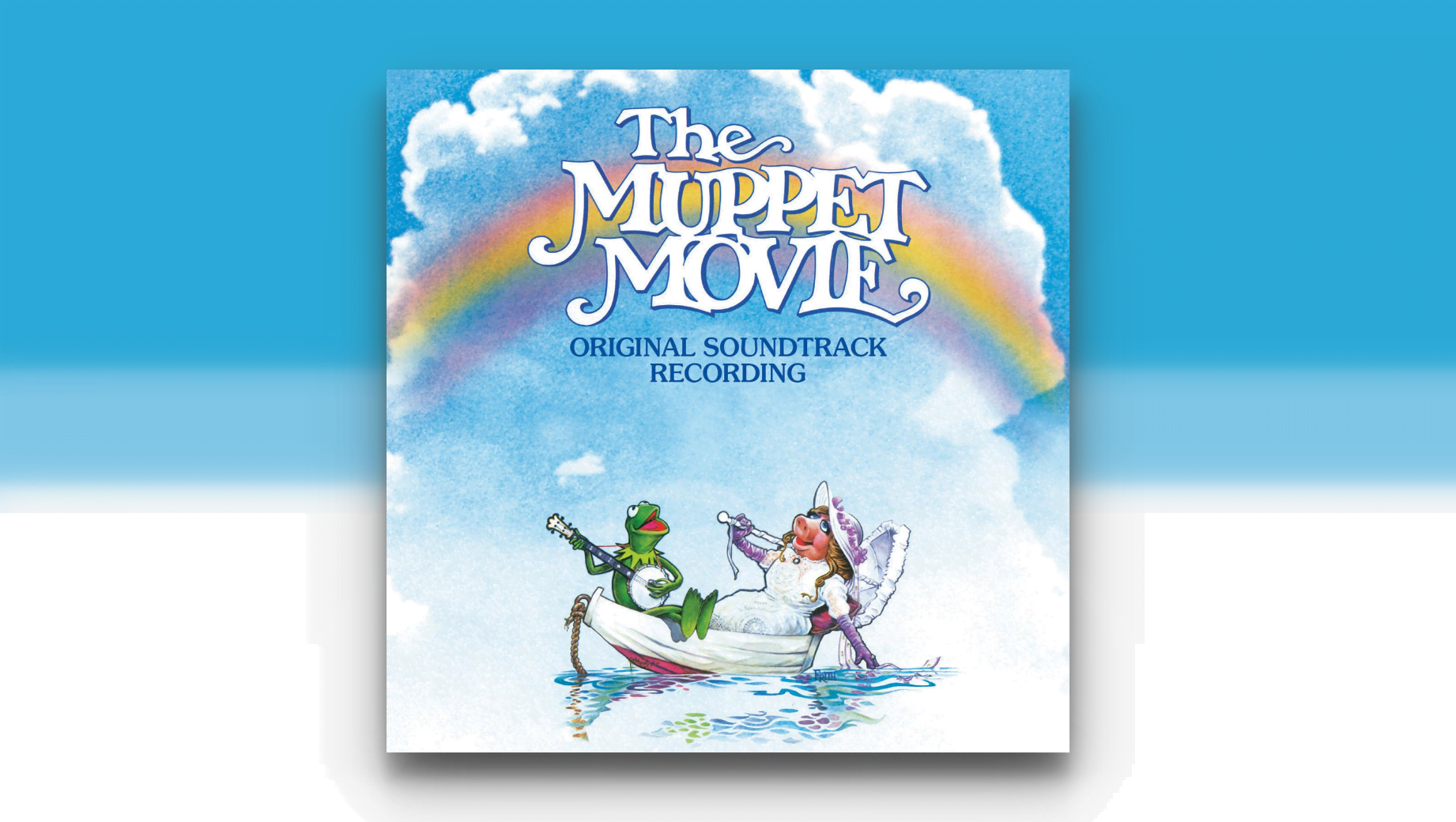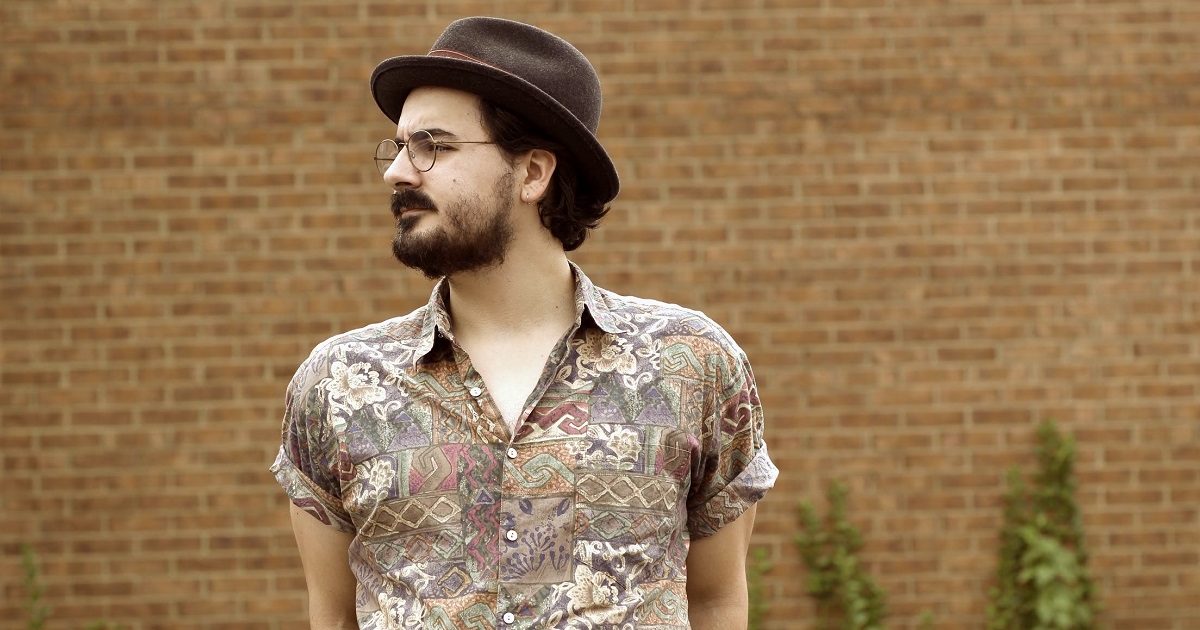When it hit theaters in 1979, The Muppet Movie took that troupe of felt characters out of the theater and into the real world. On their hit television show, they ran a vaudeville company that hosted a different celebrity each week, but their first feature film sent them on the road in America, to small-town beauty pageants, used car lots, empty deserts — all the way to Hollywood. Their journey starts small, in a swamp, where a lone frog sits on a log playing a banjo and singing a song that has become something of a pop standard.
“The Rainbow Connection” is, in the words of its co-writer Paul Williams, Kermit the Frog’s “I Am” song, meaning that it sets him up as a character and provides the motivation that sends him out on those highways and byways. In other words, it lends depth and humanity to a character who is mostly fabric and foam. That became Williams’ specialty over the years, and he has contributed to numerous Muppets film and television projects, including 1977’s Emmet Otter’s Jug-Band Christmas and 2008’s A Muppet Christmas: Letters to Santa.
Williams was already an enormously successful songwriter and performer by the time he stopped by The Muppet Show in 1976, having penned massive hits for the Carpenters (“We’ve Only Just Begun”), Three Dog Night (“Just an Old-Fashioned Love Song”), and Barbra Streisand (“Evergreen”). Often working with co-writer Kenneth Ascher, he combined rock and Tin Pan Alley influences into a melancholy sound that spoke eloquently about loneliness, lost love, and depression. But he was also a gifted comedian, which led to numerous movie roles (including the Smokey & the Bandit films) and made him a natural fit in the Muppet ensemble.
With the film returning to select theaters for its 40th anniversary, Williams and the Muppets are still remembered for that song Kermit sings in the swamp at the beginning of The Muppet Movie. Featuring a spare arrangement that foregrounds the banjo and adds only dollops of sympathetic strings, “The Rainbow Connection” may be the first time many young listeners see that particular instrument or even consider the idea of roots music, although the Oscar-nominated song has been covered by a wide range of performers, including Harry Nilsson, Judy Collins, Weezer, and countless kindergarten classes.
To inaugurate a new column called Roots on Screen, which will examine depictions of roots music in movies, on television shows, and through various media, we talked to Williams about his experiences with his Muppet co-stars, his work with Jim Henson, and what it means to live with a classic.
BGS: What was your introduction to the Muppets?
Williams: When I went over to do The Muppet Show, I was already a fan. I had been on the road with my band, and we would watch Sesame Street every morning. We’d get up, sometimes with a horrific hangover and often in some tiny little town in the middle of nowhere. We loved it. I didn’t even know they were called Muppets, those little felt guys on Sesame Street, but there was something in the talent and intellect and the wit. It’s beyond humor. It’s something more.
Of course, that has a lot to do with Jim and the remarkable Muppeteers, like Frank Oz and Dave Goelz. If you were talking to Frank and Jim and they happened to be carrying Kermit and Miss Piggy with them, then there would be five of you in the conversation. As sweet and loving as Frank Oz is, that woman he carries around can be very biting! “What songs are you writing for moi? You call that a love song!” When you wake up in the morning and know you’re going to go work with Gonzo and Kermy and Miss Piggy, it just feels like home.
What was it like working with Jim Henson? What kind of direction did he give you?
One of the elements that is hugely important to the film is the remarkable attitude Jim Henson had to the people he worked with. At the first meeting about The Muppet Movie, we met at my house in the Hollywood Hills. It was me and Jim and Jerry Juhl, who was writing the script. David Lazar, the producer, was there. And Kenny Ascher, who I was co-writing with at the time.
After the meeting, I was walking Jim to his car and I told him: Jim, I know how important this adventure is for you. It’s the first Muppet movie. So Kenny and I aren’t going to surprise you with anything. We’ll let you hear the songs as we’re working on them and make sure we’re headed in the right direction. And he said, “Oh no, Paul, that’s not necessary. I’ll hear them in the studio when you record.” Wow. To have that kind of confidence in the choices he had made, and to trust somebody with so much creative freedom was just remarkable.
Jim’s approach was so positive. If he didn’t think something was going to work, he would say so. But it would be so gently and lovingly delivered that you didn’t even know you’d been told no. He could say “Get out of my office, that’s not good!” and make it sound like “Come have dinner with me.”
Did he ever tell you no?
He did. It was one of my favorite songs in the movie — “I’m Going to Go Back There Someday.” My favorite Muppet will always be Gonzo. He’s a landlocked bird. I’m a landlocked bird. We’re all landlocked birds! There’s a wonderful scene when the Muppets are on their way to Hollywood and they break down in the desert. Kermit’s feeling like a failure and he walks away. But Gonzo’s still there, and I wondered what it’s like for Gonzo to look up at that sky as a bird who cannot fly.
So Kenny and I wrote “I’m Going to Go Back There Someday” for Gonzo. Jim said, “It’s beautiful, but I don’t see how….” He never finished the sentence. We figured that was that. It was done. But then he came back a couple days later and said, what if we have a scene where Gonzo buys all these helium balloons for his girlfriend Camilla and he experiences flight and that awakens all this within him? Jim found a way to make it work.
That song defines Gonzo much the same way “The Rainbow Connection” defines Kermit.
The big thing with that song was that we had to show that Kermit has an inner life. The song that Kenny and I tried to shoot for was “When You Wish Upon a Star.” When Jiminy Cricket sings that song, it’s so touching. There’s so much depth there. We wanted to do something like that with Kermit. He’s a frog. He’s got water. He’s got refracted light. So he’s got rainbows. That seemed like the obvious thing for us to write about.
But we quickly wrote ourselves into the worst corner. “Why are there so many songs about rainbows? What’s on the other side? Rainbows are visions, but only illusions. Rainbows have nothing to hide.” Oh shit, look what we did! We painted ourselves into a corner. We’re advocating for people to grow up and knock off all that dreamy rainbow crap.
How did you get around that? Did you consider starting over?
I don’t know what happened, but we managed to follow it up with, “So we’ve been told and some choose to believe it. I know they’re wrong. Wait and see. Someday we’ll find it, the rainbow connection, the lovers, the dreamers, and me.” In that moment Kermit ceases to be this creature, this Yoda or mentor or whatever, and he becomes a member of the audience. He becomes part of the public that is affected by this magic. So that was a gift.
If there’s a philosophy in the film, it’s in that song and it’s expressed again at the end: “Life’s like a movie, keep believing keep pretending!” It solidifies that connection to the audience. I’m a member of the Church of Religious Science. Not Scientology, but the Science of the Mind. It basically says that everyone is empowered by love. Our thoughts, what we dwell on and create — we build our own futures with our thoughts. If you keep thinking that you’re not going to get that job, then that becomes a sort of prayer.
So I just keep expecting the best and things keep happening. That song is a perfect example. There was so much unintended information. As we were writing it, I’m not sure we were thinking any of these things on that kind of level. “Oh, here’s where Kermit becomes a member of the audience.” We weren’t thinking consciously about any of that. It’s only now that I see that’s what we did. Later on you can take credit for some of the stuff that’s just handed to you by your higher self or the Big Amigo or the muse or whatever you believe in.
That song delivers such a complex philosophy, especially for what is ostensibly a children’s movie. I was one of those children. Now I’m an adult and I’m still finding new meanings and implications in “The Rainbow Connection.”
“Who said that every wish would be heard and answered, when wished on a morning star? Somebody thought of that and someone believed it. Look what it’s done so far.” I think that’s a nice encapsulation of the power of faith. Jim instructed us never to write down to children. That was never the point. We were writing the story and the characters. I think the special thing about the Muppets is that they encompass every age.
Was there a decision to focus on the banjo in that first song?
We were meeting at my house, and we asked Jim how the movie was going to start. He said, “We discover Kermit sitting in the swamp on his lily pad.” Well, it turned out to be a log, because it was easier to hide Jim in a log. OK, we find him in the middle of the swamp. What’s he doing? Jim thought for a minute and said, “He’s playing the banjo.” Oh, OK. That’s your lead instrument. So we got to work. The way Kenny and I write, it’s almost like we’re one consciousness. I probably write about 85 percent of the lyrics and a little bit of the melody as I’m singing, and he writes 85 percent of the music and a little bit of the lyrics. It was a perfect collaboration for The Muppet Movie.
“The Rainbow Connection” is perhaps the first exposure to the banjo and more generally the notion of roots music for a lot of young viewers. Do you ever get that from fans? Has anyone ever told you that the picked up the banjo because of that song?
I should ask Steve Martin! He was playing the banjo with an arrow through his head long before The Muppet Movie came out, so I think he probably has that honor. But you asked a question that’s never been asked before. I’ve never even thought about it. If I was drinking and using — it’s been 29 years — I might have said something like, “The whole reason there’s banjo in America today is because of me and Kermit.” But now I don’t know. I hadn’t thought of that. It’s wonderful.
It’s funny how things change, too. When I was working on Ishtar, I wrote a song that goes, “Telling the truth can be dangerous business. Honest and popular don’t go hand in hand. If you admit that you can play the accordion, no one will hire you in a rock ‘n’ roll band.” That was true in 1986, but in 2019 an accordion is a perfectly acceptable instrument in a rock ‘n’ roll band. So is a banjo.
Are there any covers of “The Rainbow Connection” that stand out to you?
Willie Nelson recorded it and then we did a duet together, just two old guys talking to each other. Hearing him sing those words — that was a career high for me. Sarah McLachlan did a beautiful recording of it. The Dixie Chicks recorded it. Jason Mraz and I did a duet. It’s had some remarkable recordings, and I hope there are more to come. And then I’ll get somebody telling me that their son or daughter is learning to play piano and learning “Rainbow Connection.” Or their children sang it at their kindergarten graduation. That’s what I call a heart payment. We got a life with that song.



